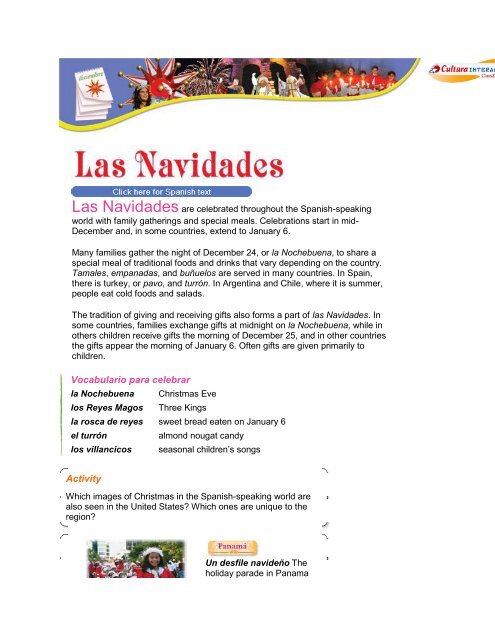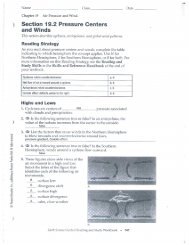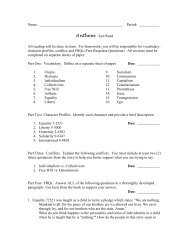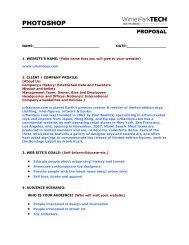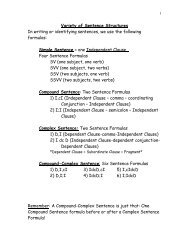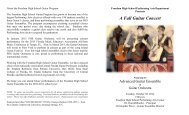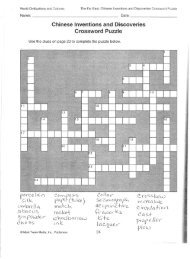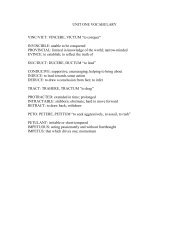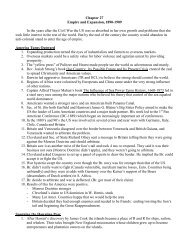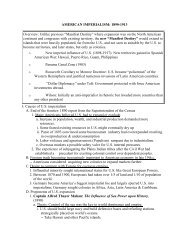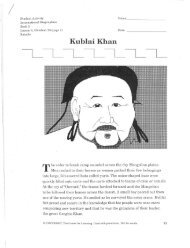Vocabulario para celebrar Activity - OCPS Teacher Server
Vocabulario para celebrar Activity - OCPS Teacher Server
Vocabulario para celebrar Activity - OCPS Teacher Server
You also want an ePaper? Increase the reach of your titles
YUMPU automatically turns print PDFs into web optimized ePapers that Google loves.
Las Navidades are celebrated throughout the Spanish-speaking<br />
world with family gatherings and special meals. Celebrations start in mid-<br />
December and, in some countries, extend to January 6.<br />
Many families gather the night of December 24, or la Nochebuena, to share a<br />
special meal of traditional foods and drinks that vary depending on the country.<br />
Tamales, empanadas, and buñuelos are served in many countries. In Spain,<br />
there is turkey, or pavo, and turrón. In Argentina and Chile, where it is summer,<br />
people eat cold foods and salads.<br />
The tradition of giving and receiving gifts also forms a part of las Navidades. In<br />
some countries, families exchange gifts at midnight on la Nochebuena, while in<br />
others children receive gifts the morning of December 25, and in other countries<br />
the gifts appear the morning of January 6. Often gifts are given primarily to<br />
children.<br />
<strong>Vocabulario</strong> <strong>para</strong> <strong>celebrar</strong><br />
la Nochebuena Christmas Eve<br />
los Reyes Magos Three Kings<br />
la rosca de reyes sweet bread eaten on January 6<br />
el turrón almond nougat candy<br />
los villancicos seasonal children’s songs<br />
<strong>Activity</strong><br />
Which images of Christmas in the Spanish-speaking world are<br />
also seen in the United States? Which ones are unique to the<br />
region?<br />
Un desfile navideño The<br />
holiday <strong>para</strong>de in Panama


